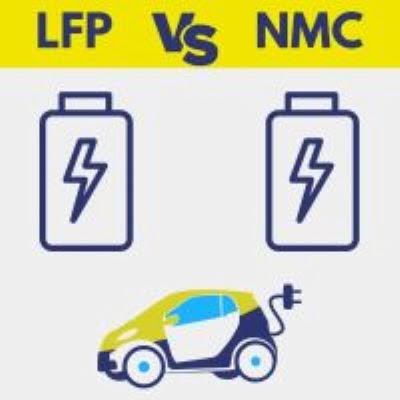Wondering about LFP vs NMC Battery? Well, wonder no more now. The EV market worldwide is projected to grow by 17.02% till 2027 with a market volume of more than $850 Billion.
Countries in Europe are aggressively pushing the automobile industry towards adoption of EVs. Many countries have set ambitious targets for 2030s with respect to EV penetration.
Future Competition between automotive companies will be more for EV batteries than for other specs. This opens up a host of possibilities with respect to research and development in EV Batteries.
Even today companies are spending millions of dollars in R&D of EV Batteries. They are either partnering up with labs, battery companies or are acquiring startups to strengthen their EV Research Portfolio.
E.g. – Sony and Honda jointly announced their EV “Afeela” at CES 2023.
Table of Contents
Introduction
When it comes to EVs, batteries are the most crucial part. They can constitute 50% of the total vehicle price and 35% of the total weight of the car.
Currently the most widely used type of battery in car is the Lithium ion battery. Lithium Ion batteries were first developed for use in consumer electronics.
However as the technology progressed its applications widened. As a result we today see Lithium Ion batteries used in automobiles.
In Lithium ion batteries lithium ions flow from cathode to anode through electrolyte.
Currently there are LFP NMC Batteries are used in EVs. But with number of EVs getting both LFP(Lithium Ion Phosphate) and NMC(Nickel Manganese Cobalt) many are confused as to what is the difference the two and which his better? Let’s take a detailed look between LFP vs NMC battery.
Now coming to LFP and NMC, both are types of lithium ion batteries. In LFP the cathode material is made of Lithium iron phosphate while the anode material is made of graphite. In NMC, the cathode material is made of nickel manganese cobalt while anode material is made of graphite.

The major differences that remain between the two are cycle life, energy density, temperature withstanding, safety, lifespan.
Advantages of LFP over NMC
1) Cycle Time
Cycle time is the number of charging and discharging cycles that the battery can last. A NMC battery generally lasts 800 cycles while LFP battery can last 2500 cycles.
2) Service Life
LFP batteries can last more than NMC battery because of their better durability. Degradation occurs faster in NMC batteries than LFP batteries.
3) Temperature Tolerance
Here too LFP batteries score better than NMC batteries as they have the capability to operate in a wide range of varying temperatures – from -4° C to 55° C.
4) Safety – LFP vs NMC Cost
LFP batteries due to their relatively stable electro-chemical property. It is not like they will not catch fire but the probability of LFP batteries catching fire is less than that of NMC batteries. NMC batteries under high temperature conditions are more prone to fire than LFP Batteries.
Advantages of NMC batteries over LFP
1) Energy Density – LFP vs NMC Energy Density
Simply put energy density is the amount of energy that can be stored in a space. NMC batteries have higher energy density than LFP batteries and thus can provide better range.
2) Size
Consider NMC and LFP battery offering same range, in that case NMC battery size will be less because of its higher density.
As EV industry is heating up,many car/battery manufacturers are now working towards improving the scope of both LFPs and NMCs.
Also with the advent of solid state batteries,hydrogen fuel cells, hybrid tech, flex engines the automobile industry in all is gearing up for a major transition.
What are Solid State Batteries? Solid State Batteries are posed as the next big thing that can disrupt EV industry.They are batteries with solid based electrolyte. You can read more about Solid State Batteries here.
If you loved this article, please share it in your social circles.
References –

